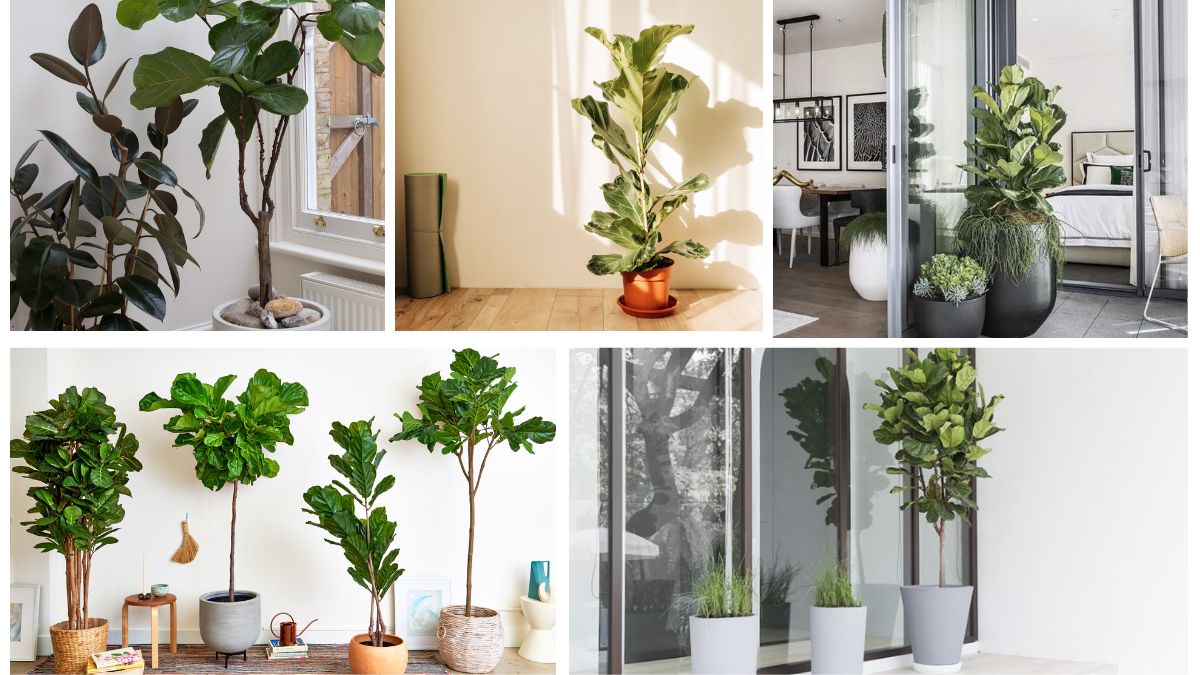The fiddle leaf fig (Ficus lyrata) has become one of the most beloved houseplants thanks to its dramatic, glossy leaves and sculptural presence. Often seen as the star of indoor design, this plant can add a lush, elegant vibe to any space. But beyond basic care, styling your fiddle leaf fig plays a key role in how healthy and beautiful it appears.
From shaping its growth and encouraging bushiness to choosing the right pot and location, styling is an ongoing relationship between you and your plant. In this complete guide, we’ll explore how often you should style a fiddle leaf fig, what styling actually involves, and how to do it right for long-term success.
What Does Styling a Fiddle Leaf Fig Mean?
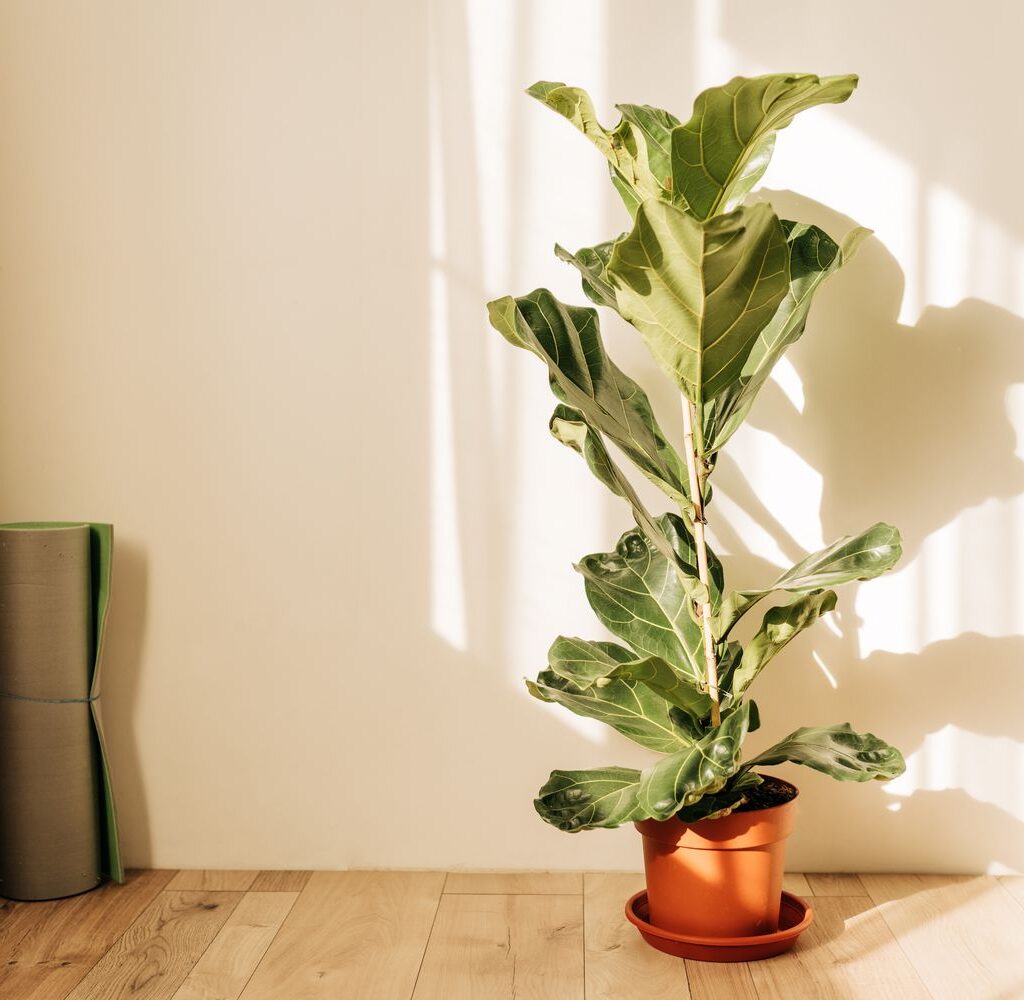
Styling a fiddle leaf fig refers to the aesthetic and growth-shaping practices you use to enhance the plant’s form. This goes beyond watering and sunlight — it’s about encouraging upright, balanced growth, fuller foliage, and a visually pleasing silhouette.
Styling typically includes:
- Pruning or trimming leaves
- Pinching to encourage branching
- Shaping or staking
- Repotting into decorative containers
- Rotating the plant for even sun exposure
- Cleaning leaves for maximum shine
Doing these at the right time and frequency will help your fiddle leaf fig flourish both in appearance and health.
1. Pruning: Style Your Fig Every 3–6 Months
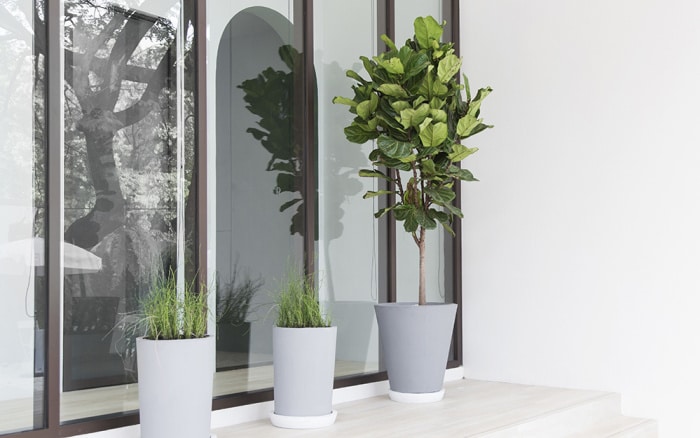
Fiddle leaf figs can become leggy or unbalanced without occasional pruning. Pruning every 3 to 6 months helps shape the canopy and keep the plant compact and attractive.
How to Prune:
- Use sharp, sterile scissors.
- Cut just above a node (where a leaf joins the stem).
- Remove any damaged or awkwardly placed leaves.
Styling Tip: Pruning encourages new growth and can lead to a bushier look, especially if done during the growing season (spring and summer).
2. Pinching to Encourage Branching: Every Few Months in Growing Season
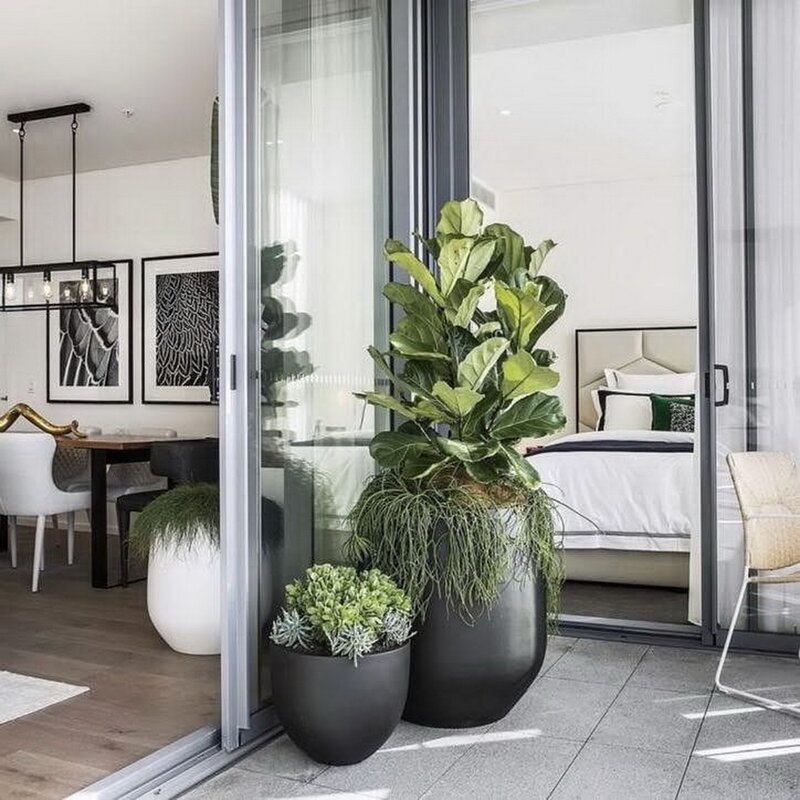
One of the best ways to get a fuller fiddle leaf fig is by pinching — removing the small tip or terminal bud at the top of the plant.
When to Pinch:
- During spring or early summer.
- Every 2–3 months if your plant is growing vigorously.
How to Pinch:
- Use clean fingers or scissors to remove just the topmost small bud.
- Wait and watch for new side branches to develop.
This is a subtle but powerful styling method to create a tree-like or bushy form.
3. Leaf Dusting and Cleaning: Every 2–4 Weeks
A major part of your fiddle leaf fig’s appeal is its large, glossy leaves. However, dust accumulation can dull its shine and hinder photosynthesis.
How Often: Clean the leaves every 2–4 weeks.
How to Clean:
- Use a soft damp cloth or microfiber towel.
- Support the leaf with one hand as you wipe gently.
Styling Benefit: Clean leaves not only look better but help your plant absorb more light and grow more evenly.
4. Pot and Decorative Styling: Refresh Every 1–2 Years
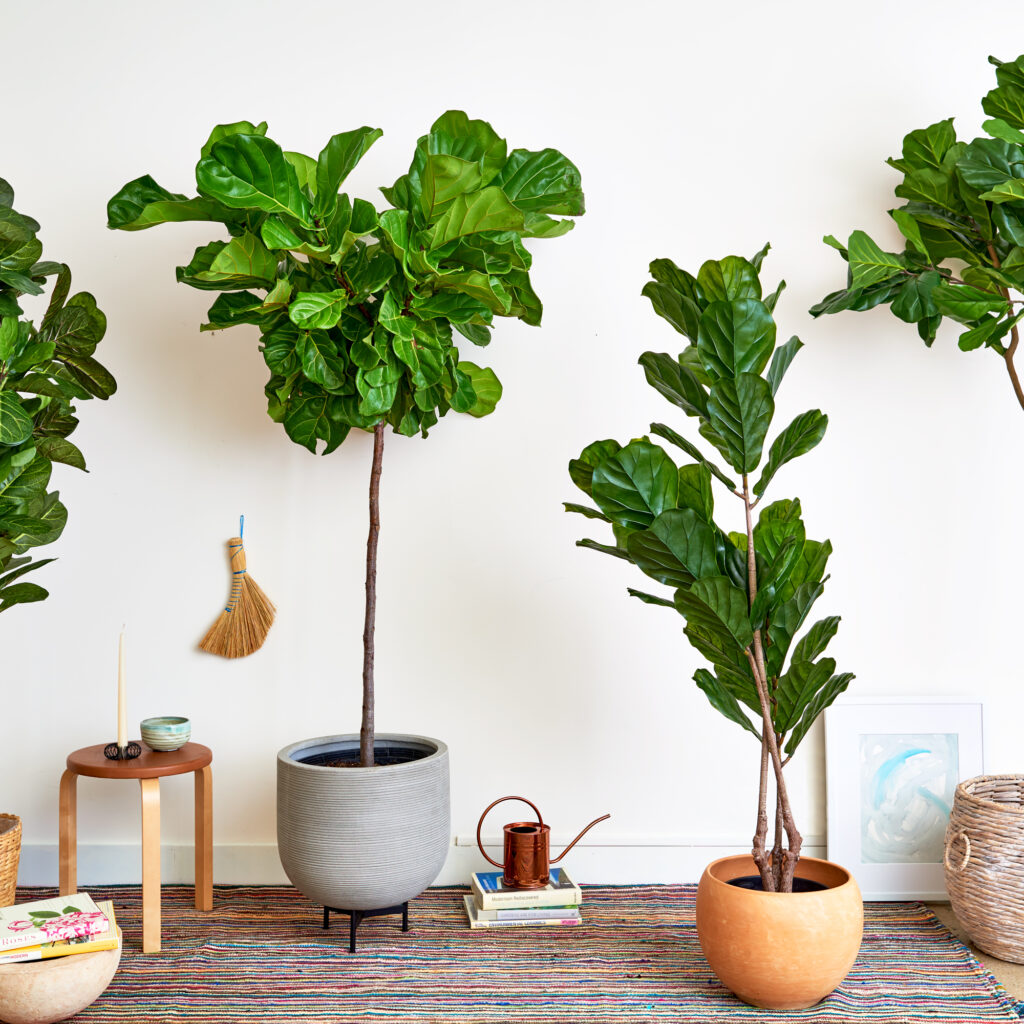
The container and base you choose for your fiddle leaf fig matter. Styling includes not only what’s above the soil but also what holds your plant.
Repotting Frequency:
- Every 12–24 months (especially for younger plants).
- Choose a pot that complements your decor and supports growth.
Styling Tip: Elevate the plant with a stand, basket, or ceramic pot for a more polished, modern look.
5. Rotating for Balanced Growth: Weekly or Biweekly
Your fiddle leaf fig will naturally lean toward the light, which can result in lopsided growth. Rotating the plant ensures that all sides receive equal sunlight.
How Often to Rotate:
- Once every 1–2 weeks.
How to Do It:
- Turn the pot 90° each time you water.
- Keep an eye on how the leaves are responding.
Styling Advantage: This simple habit keeps your plant growing tall and straight, instead of leaning or drooping.
6. Support and Staking: As Needed, Especially When Young
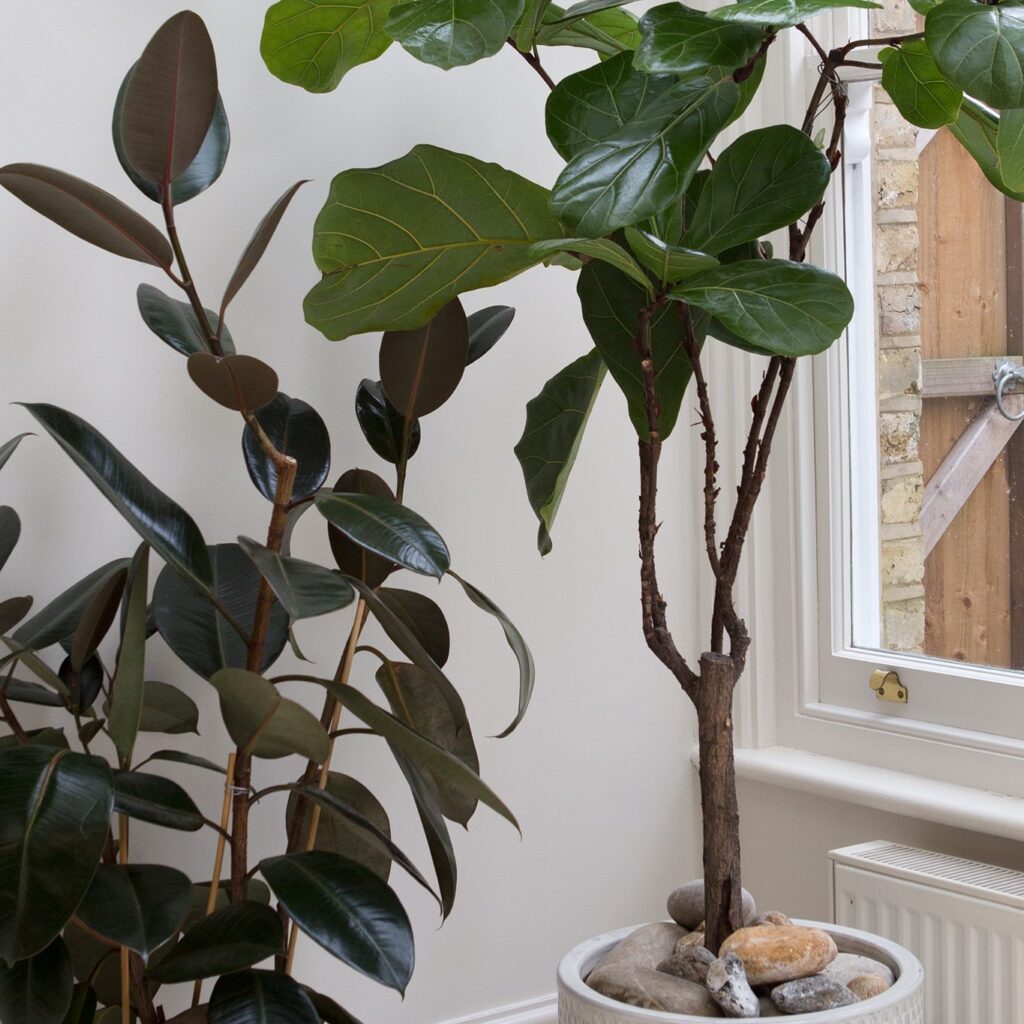
Some fiddle leaf figs may need support while growing, especially if they’re tall or have thin stems. You can use stakes, moss poles, or bamboo rods.
When to Add Support:
- If the plant is drooping or leaning.
- If new growth appears too heavy for the stem.
Styling Tip: Choose attractive materials (natural bamboo, decorative moss poles) that enhance your indoor aesthetic.
7. Seasonal Adjustments: Style with the Seasons
Fiddle leaf figs experience changes throughout the year. Your styling should adapt as the plant enters different seasonal phases.
Spring & Summer:
- Active growth period.
- Ideal for pruning, pinching, and repotting.
Fall & Winter:
- Slow growth or dormancy.
- Reduce pruning and limit watering.
- Clean leaves and maintain styling basics.
Styling Strategy: Take advantage of the growing season to shape your plant and give it the winter to rest and recover.
8. Choosing the Right Spot: Reevaluate Every Few Months
Sunlight exposure is key to the health and look of your fiddle leaf fig. Even if you found the perfect place at first, light levels change with the seasons.
Check Light Every Few Months:
- South or east-facing windows are best.
- Avoid drafts or hot radiators.
Styling Impact: The right lighting makes your fig look upright, lush, and green. Poor light leads to sparse growth and leaf drop.
Signs Your Fiddle Leaf Fig Needs Restyling
You’ll know it’s time to style or adjust your fiddle leaf fig if:
- It’s leaning or unevenly shaped.
- The lower leaves are dropping.
- It looks sparse or leggy.
- Dust coats the leaves.
- It’s outgrowing its pot.
Think of styling as a routine beauty and health check-up. A little attention every few weeks goes a long way.
Final Thoughts: Styling as a Journey
Styling your fiddle leaf fig isn’t a one-time task — it’s an ongoing journey that evolves with your plant. With regular pruning, pinching, rotating, and cleaning, you’ll not only maintain a stunning indoor statement plant but also help it thrive for years.
By staying in tune with the seasons and your plant’s signals, styling becomes second nature. Every cut, polish, or pot refresh adds to the personality and charm of your fiddle leaf fig — making it a living work of art.
